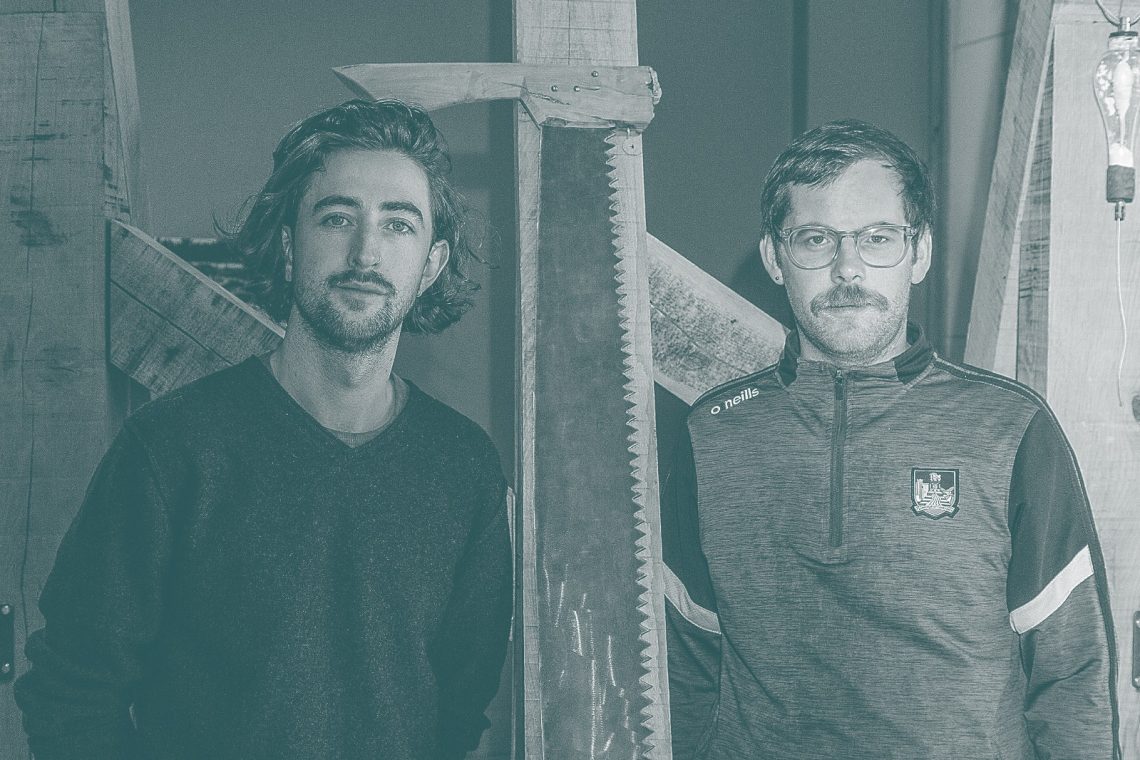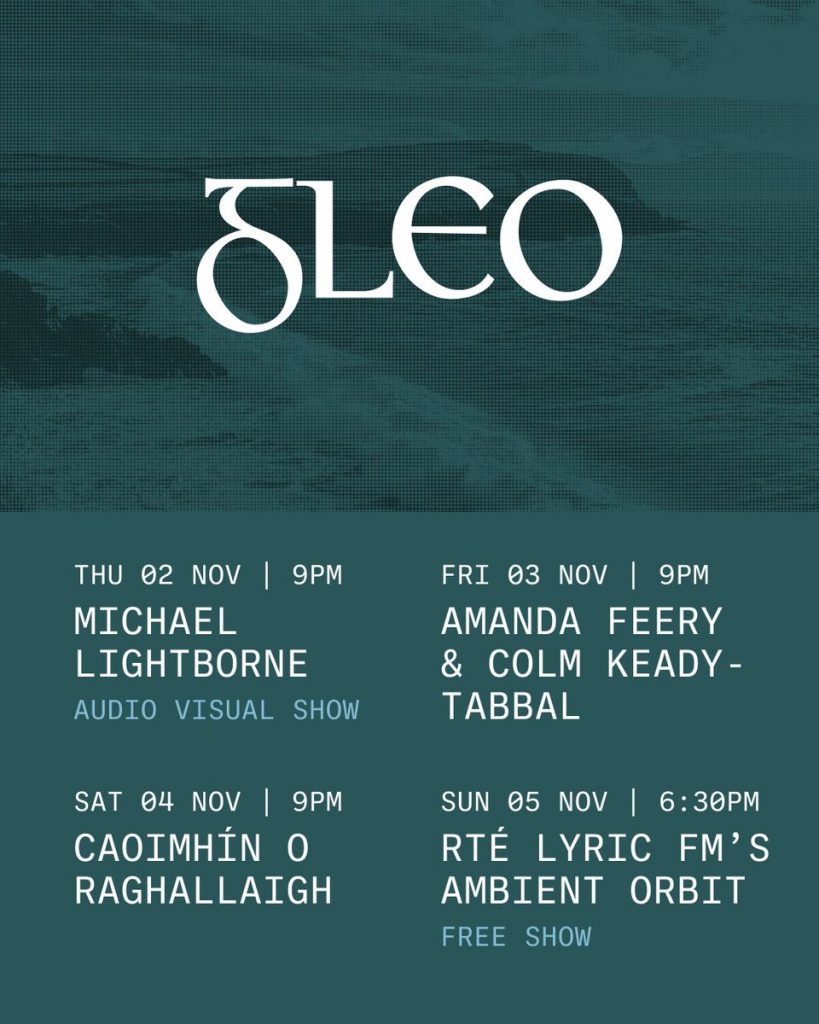If live music has one grand, immutable law, it’s that most venues are usually only as vital as the sounders who inhabit them. In Limerick – a city we have been known to refer to as the beating heart of the island’s independent scene – it’s a sentiment you will often find spilling over in rooms like Dolans, The Commerical and Pharmacia. Without these spaces and the heroes that helm them, the sounders would know each other much less and a whole community would suffer for it.
Yet for all the obvious rude health, for Jack Brolly and Caimin Walsh, artist and curator of Limerick art gallery and cultural resource centre Ormston House, some frustrations about how gigs are presented and promoted doubled as an invitation to go further with the city’s more non-traditional gig space.
Enter Gleo. Taking over Ormston House from 2nd-5th November, it’s a new ambient and experimental series that turns the contrast up on the rare old magic of gathering and listening together amid the changing seasons. Via a carefully curated programme featuring world-beating Irish musicians, artists, composers, and broadcasters, audiences can expect four evenings of supremely muted, in-between sounds.
With origins on the West Coast of Ireland, Gleo is an old Irish word that refers to the “sound of the sea when it is loud and ominous, its tumult and texture akin to man-made or mechanical noise, a sound that foretells bad weather.”
It’s a definition that not only speaks to the need for a certain collective sanctuary at a time of year when thoughts and bodies turn inward – it also runs parallel with the original impetus behind the series being, according to Walsh, music “connected to the landscape and manipulates or references field recordings, as well as the relationship between nature and man-made production.”
The name itself, however, stemmed from some good, old-fashioned doomscrolling.
“As is often the case, I discovered it browsing Instagram,” says Jack Brolly, who also runs events under the title Lower Your Expectations and works as part of the teams behind Féile Na Gréine and Open Ear festival. “Manchán Magan has a thing I’ve always loved called Sea Tamagotchi, where he collects rare Irish words specific to things that can be found along the coast and the ocean. He posted ‘gleo’ one day and I thought looked beautiful and it sounded amazing.
“I loved it so much that I wrote it down and had it in mind for a label I wanted to start, but it just fit this project so well that it made perfect sense.”
One of the most immediate things about Gleo on paper is just how much sonic and conceptual territory it spans with a relatively compact bill. Among several script-flipping artists is Dublin fiddler Caoimhín Ó Raghallaigh. A master summoner of dense drones and harmonics with his 10-string fiddle, the Hardanger d’Amoré, his work approaches the boundary where traditional music begins to disintegrate. “There’s an incredible album that he released in 2014 called Music for an Elliptical Orbit,” says Walsh. “He’s a perfect fit because his work references tradition but obviously has a contemporary edge.”
It’s a midpoint that comes into sharp focus with a double bill on Friday, 3rd November, when Dublin composer Amanda Feery presents ‘we could be diving for pearls’. A hymn to the worker scored for vocal ensemble and live electronics, with text by Declan Synnott, it takes Robert Saint’s hymn ‘Gresford’ – which was written in 1936 to commemorate the Gresford miners of North Wales following a fatal mining disaster – as its starting point. Speaking with Walsh and Brolly over Zoom, their mutual enthusiasm for her choral compositions – about what’s in store for the set at Ormston House – is almost touchable.
Sharing the bill is Irish-Lebanese artist, Colm Keady-Tabbal, who also makes music under their entrd. moniker. “I know their work as a visual artist,” says Walsh. “Jack suggested them and it kind of only clicked that they were the same person. They put out a great LP, Voix Céleste III, back in 2020 via wherethetimegoes. Like Caoimhín, because we’ve tried to create a balance between things that might be more familiar or traditional-sounding with those that are quite contemporary, Colm’s work tows that line with organ compositions on one hand, but also all these quite manipulated, heavily processed digital sounds on the other.”
With the aforesaid frustrations about how gigs are presented and promoted in mind, Brolly and Walsh mused on Gleo for a couple of years until a crucial, outstanding link came in the form of support from the Night-Time Economy After Hours at the Museum scheme. With it, the vision of Gleo took full, luminous form – for the mutual benefit of Irish artists, audiences, and Limerick’s night-time economy.
“With the fund, and me working at Ormston House, a driving factor is that music doesn’t fit within a pub or club context,” says Walsh. “It’s about making a different space for that music to exist and be performed that is maybe a bit more sympathetic to having people kind of listen attentively and of appreciate it. Of course, there are still limitations to the space itself. It’s quite big so it has quite a natural echo, so one of the tasks that we had was to actually kind of program things which would actually be musically fitting to that kind of acoustic space.”
“I think the fund came at a perfect time because the point of Gleo is that it has to be a late-night event in a space like Ormston House,” adds Brolly. “Limerick is great with a couple of venues that are all very facilitating, but there are very few non-drink-selling venues here. So it’s nice to be able to graduate from that. It means we can focus more on the actual wider context of asking, ‘Why are we gathering together? Why are we standing in a room wanting to listen to music?'”
You need only watch Graham Patterson’s 2022 documentary Out of Place to get a sense of Limerick’s creative community’s striving for togetherness, and nurturing what underlies that most human compulsion. A remarkable collective effort from the people behind the island’s finest truly independent annual festival, Féile Na Gréine, it’s a document whose spirit fully aligns with the thinking behind Gleo.
“I live for that sense of community,” says Brolly. “It’s one of the most important things to me – just that pure idea of people being together. It’s obviously so embedded in our tradition but it’s more and more within a kind of a Diagio context these days. To be clear: I love Diageo. I’m a big fan and I give them all my money every week but we’re losing something by having that there.”
Bookending the inaugural Gleo are two essential events. On the opening night – Thursday, 2nd November – multi-disciplinary ‘agri-ambient’ artist Michael Lightborne presents ‘Water Damage,’ an audio-visual trip through the Blackwater Valley that explores the deep entanglement of Irish rivers with agriculture and politics, places and people, health and life, myth and memory. It’s a must-attend event for anyone but for Jack Brolly, the booking has an added feeling of being meant to be about it.
“I’m from a town in Cork called Millstreet,” he says. “Nobody else that I know is from there but Michael Lightborne is. Both me and Caimin are massive fans of his album Slí na Fírinne, which the Department of Energy produced. I think it’s literally as good as any piece of ambient art that has ever been made across the world. It’s actually about the Blackwater Valley, which flows near Millstreet, so it’s like a circular thing where it’s just great to have him involved.”
Come Sunday and the ever-darkening of the evenings, Gleo concludes and burrows further with a free live broadcast of RTÉ Lyric FM’s much-loved Ambient Orbit. Presented by Peter Curtin and Áine Gallagher, it’s swiftly become a source of refuge for countless listeners every week.
“The show basically combines ambient music with field recordings that can listeners from all around Ireland submit,” says Walsh. “It’s broadcast at midnight every Sunday but they’ve also started doing this live show where they bring in live musicians and do a live mix. So they’ll be doing a broadcast of that in the gallery on Sunday with Louise Gaffney and Alan Massey.”
“I’ve been a fan of Alan’s work for years,” adds Walsh. “He’s an old friend, but he’s an adventurer and producer who makes ambient music with modular equipment and manipulated guitar sounds. He’s been making stuff for years but he’s only played out twice in his life, so it’s really nice to have him perform. It’s also great to have someone from Limerick directly in the lineup as well, in terms of local representation.”
Sure enough, the question of representation for a series such as Gleo, with its strong emphasis on using spaces through a late-night lens, extends beyond the exceptional artists booked to perform. If it’s true that most venues are indeed only as vital as the sounders who inhabit them, it’s paramount that their broader needs are both heard and met.
“A central thing that we are trying to do is be relevant to the city and the people who use it and people who live and work in the city,” says Walsh. “Up until recently with the likes of Féile Na Gréine and Siege of Limerick, the city isn’t necessarily a place people come to unless they have a reason to. It’s not a major tourist spot so it’s very important for us that what we do is relevant to people who are going to be living in our neighbourhood and coming into the city and interacting with the city.”
“So it feels like the right time to do Gleo, particularly at this time of year,” he adds. “It’s a bit less lively and I guess the mood changes with that season. For me, that’s kind of why it made sense to be at this time as we come out of summer. It’s nice, and I think important to have that kind of more reflective space for music.” Brian Coney
Gleo takes place between 2nd-5th November 2023
For tickets and more info about, go to Ormston House







